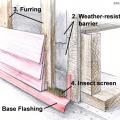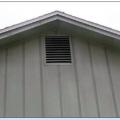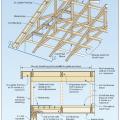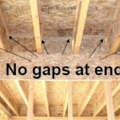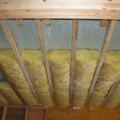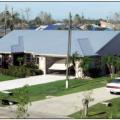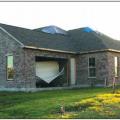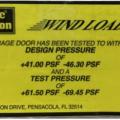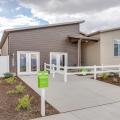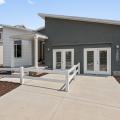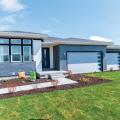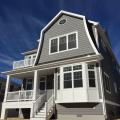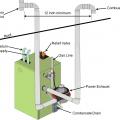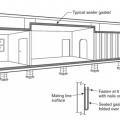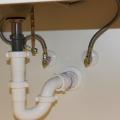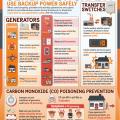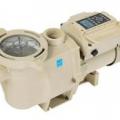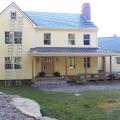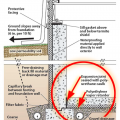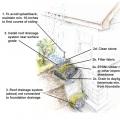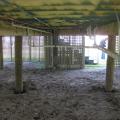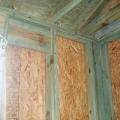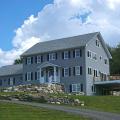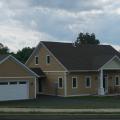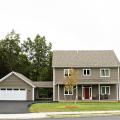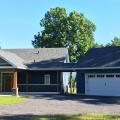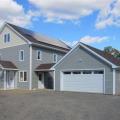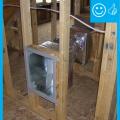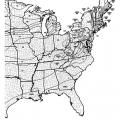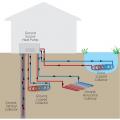Showing results 1401 - 1450 of 4973
Furring strips provide drainage gap behind lap siding; screen is added at bottom and top to prevent entry of insects and wildfire embers.
Gable end vents allow in wind-driven rain because pressures that develop between the outside surface of the wall and the inside of the attic are sufficient to drive water uphill several inches.
Gable-end bracing detail; nailing schedule, strap specification, brace spacing, and overhang limits should be adapted for the applicable basic wind speed.
Gaps at shared common walls can be a significant source of air leakage in multi-family buildings
Gaps between garage and conditioned space are properly sealed by carefully cutting and then caulking wood sections to fit between trusses above shared walls.
Garbett Construction built this multifamily home in the cold climate in Salt Lake City, UT, and certified it to DOE Zero Energy Ready Home specifications in 2018.
Garbett Construction built this production home in the cold climate in Greenville, SC, and certified it to DOE Zero Energy Ready Home specifications in 2017.
Garbett Construction built this production home in the cold climate in Park City, UT, and certified it to DOE Zero Energy Ready Home specifications in 2020.
Garbett Construction built this production home in the cold climate in West Jordan, UT, and certified it to DOE Zero Energy Ready Home specifications in 2018.
Garbett Homes built this attached housing in the cold climate in Park City, UT, and certified it to DOE Zero Energy Ready Home specifications in 2021.
Garbett Homes built this custom spec home in the cold climate in Cottonwood Canon, UT, and certified it to DOE Zero Energy Ready Home specifications in 2016.
Garbett Homes built this production home in the cold climate in Salt Lake City, UT, and certified it to DOE Zero Energy Ready Home specifications in 2013.
Garbett Homes built this production home in the cold climate in South Salt Lake, UT, and certified it to DOE Zero Energy Ready Home specifications in 2019.
Garbett Homes built this production home in the cold climate in West Jordan, UT, and certified it to DOE Zero Energy Ready Home specifications in 2021.
Garden State Modular built this custom for buyer home in the mixed-humid climate in Lavallette, NJ, and certified it to DOE Zero Energy Ready Home specifications in 2017.
Gardner Custom Homes built this custom for buyer home in the mixed-dry climate in Prescott Valley, AZ, and certified it to DOE Zero Energy Ready Home specifications in 2020.
Gardner Custom Homes built this custom spec home in the mixed-dry climate in Prescott Valley, AZ, and certified it to DOE Zero Energy Ready Home specifications in 2019.
Gas sensors are used for gas leak detection and carbon monoxide detection
Glass blocks allow in daylight while maintaining privacy and also provide protection against high winds and floods.
Glastonbury Housesmith built this custom home in the cold climate in South Glastonbury, CT, and certified it to DOE Zero Energy Ready Home specifications in 2015.
Good water management practices like sloping grade away from house, and installing gutters, perimeter drain pipe, a capillary break, and free-draining soils or drainage mat protect the foundation from water saturation.
Green Coast Enterprises built this New Orleans home on piers so that the floor is 1 foot above the base flood level; borate treated framing and closed-cell spray foam insulation add to the home's moisture resistance.
Green Coast Enterprises uses termite-resistant borate pressure-treated lumber throughout its homes in New Orleans.
Green Extreme Homes in partnership with Carl Franklin Homes built this affordable home in the hot-humid climate in Garland, TX, and certified it to DOE Zero Energy Ready Home specifications in 2014.
Green Phoenix Development built this custom spec home in the cold climate in Weston, MA, and certified it to DOE Zero Energy Ready Home specifications in 2020.
Greenhill Contracting built this 3,912-ft2 house in New Paltz, New York, to the performance criteria of the U.S. Department of Energy Zero Energy Ready Home (ZERH) program in 2016.
Greenhill Contracting built this 4,190-ft2 house in Esopus, New York, to the performance criteria of the U.S. Department of Energy Zero Energy Ready Home (ZERH) program in 2016
Greenhill Contracting built this 4,454-ft2 home in the cold climate of Esopus, New York, to the performance criteria of the DOE Zero Energy Ready Home program in 2015.
Greenhill Contracting built this custom for buyer home in the cold climate in Newburgh, NY, and certified it to DOE Zero Energy Ready Home specifications in 2019.
Greenhill Contracting built this production home in the cold climate in Esopus, NY, and certified it to DOE Zero Energy Ready Home specifications in 2014.
Ground Snow Loads for the United States (eastern), from 2021 IRC, Figure R301.2 (4)
Ground Snow Loads for the United States (western), from 2021 IRC, Figure R301.2 (3)
